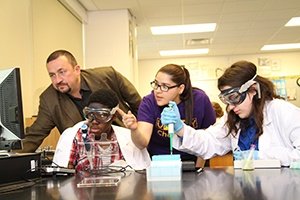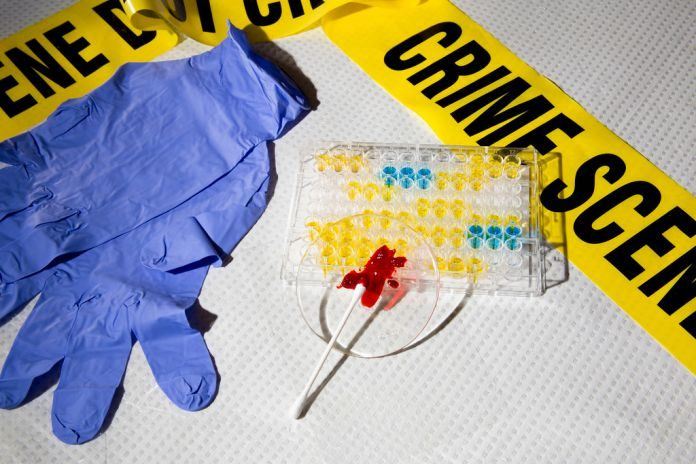Nowadays, crime is increasing day by day in the whole world. Each country is facing the danger of it. In normal language, crime is an act that is against the law and punishable by a state. In other words, crime is an act that is not only harmful to individuals but also for community and society too. It is foolish and wrong. People committing a crime for their living, but, this is not a good reason for all the time. Much people don’t work, because they don’t want to work, just they want to sit home and wait for the monthly support.
Jan Halámek, Assistant Chemistry Professor and his team at University at Albany disclose a new and simple way estimate the age range of a criminal through blood remains left at a crime scene.
The team can tell if the criminal is young (under 18) or older, along with the time since deposition (TSD) of the blood spot, due to examining alkaline phosphatase (ALP) levels. Alkaline phosphatase (ALP) is a protein found in all body tissues.
According to Jan Halamek, Assistant Professor at the University of Albany, ALP levels are based on age. It makes equivalence almost easy. The team is able to examine how much time the sample has been left behind based on ALP’s enzyme activity, which reduces with time. By using “mimicked crime scene conditions” and real human serum samples, the team has tested both discoveries. The results came out with 100 percent accuracy for more than 2 days.
This is the second method revealed by Halamek to detect criminals by using body fluids biomarkers. Last year, his team discovered a straightforward way to identify whether a criminal was male or female. It depended on amino acid content left behind in fingerprints. Level are high increasing in the sweat of women as in that of men. This method wins national attention.
In a recent interview with Forensic Magazine, Halámek said, “It’s all about the biomarkers, looking for the attributes of a person. It’s pure chemistry.”

The team hopes that both of this discoveries will help detectors in obtaining information about suspects. This test is easy to perform and gives instant results. It also can help match individuals who are not found through an existing DNA database.
Halámek said, “We would like to see our research packaged as a potential forensic kit and utilized by all law enforcement.”
“If these tests are made portable, they can be rapidly analyzed at the crime scene by individuals who have minimal scientific training,” he then said.
This test is so user-friendly. To prove it, Halamek has let high schoolers in Averill Park, N.Y., give them a try. And students in Dr. Gregory Panzanaro’s Introduction to Forensic Science class successfully performed the ALP analyzation in order to determine age range.
“We hope to continue working with students on projects in our lab going forward. It is a great opportunity for them to gain real-world forensic experience,” said Halámek.
Now, the team is working to enhance both the fingerprint and blood residue tests. They are also working on additional identification methods based on other body fluids.
